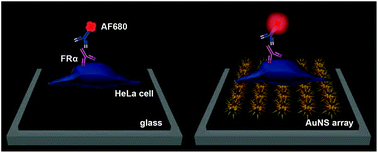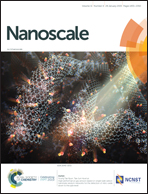Towards multiplexed near-infrared cellular imaging using gold nanostar arrays with tunable fluorescence enhancement
Abstract
Sensitive detection of disease biomarkers expressed by human cells is critical to the development of novel diagnostic and therapeutic methods. Here we report that plasmonic arrays based on gold nanostar (AuNS) monolayers enable up to 19-fold fluorescence enhancement for cellular imaging in the near-infrared (NIR) biological window, allowing the application of low quantum yield fluorophores for sensitive cellular imaging. The high fluorescence enhancement together with low autofluorescence interference in this wavelength range enable higher signal-to-noise ratio compared to other diagnostic modalities. Using AuNSs of different geometries and therefore controllable electric field enhancement, cellular imaging with tunable enhancement factors is achieved, which may be useful for the development of multicolour and multiplexed platforms for a panel of biomarkers, allowing to distinguish different subcell populations at the single cell level. Finally, the uptake of AuNSs within HeLa cells and their high biocompatibility, pave the way for novel high-performance in vitro and in vivo diagnostic platforms.



 Please wait while we load your content...
Please wait while we load your content...